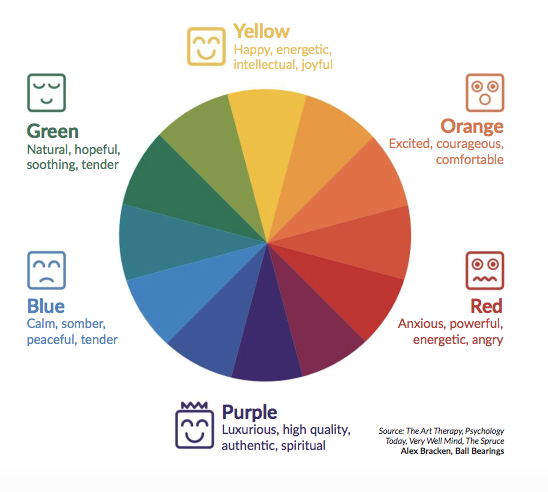Your favorite color is more than an icebreaker.
The sterile white walls of hospital rooms or the pastels that line baby nurseries are there for a reason. Colors are purposeful, and each color activates something different within us.
Color psychology and color theory are the practices that discover why colors are not an unconscious decision when we choose throw pillows or the brackets in our braces. Color is one of the first things we recognize as children. It holds significant emotional connections as we associate color with other aspects of our lives.
An article by Andrew Elliot and Markus Maier published in the Annual Review of Psychology, “Color Psychology: Effects of Perceiving Color on Psychological Functioning in Humans” explores how viewing a certain color can lead our minds on a cognitive track that we do not realize is there.
According to the paper, viewing the color red before doing an analytical activity caused participants to perform worse than if they viewed green before the same task. The paper concluded red also has a similar effect on more difficult cognitive tasks such as memory, language, and creativity.
Further research of the same study mentions that viewing the color green during a cycling task resulted in participants having perceived less exertion during the task than if they viewed red or gray.
Junior Hannah Fehr’s favorite colors are grays, greens, and purples. All three give her distinct feelings that she’s drawn to.
“When I am around gray, I feel serene, and monochrome gray rooms actually help my anxiety feel lessened. It’s kind of similar in all-white rooms, but more invigorating, where gray feels more stabilizing,” Fehr says.
Art and play therapist Cheryl Childers out of South Carolina uses color psychology in most sessions. Art therapy can be an alternative for clients who feel uncomfortable during traditional talk therapy, and it allows them to open up, using things like color to tell their story.
Childers discussed the importance of color when, for instance, working with people with DID, or Dissociative Identity Disorder. Those that have suffered from immense trauma and abuse over their lifetime separate those events internally, making them sometimes easier to comprehend when they are in parts, instead of a whole. Labeling those events or parts as a particular color may be how those people remember and discuss these traumas in treatment and in their coping processes.
“When [they] switch to that part, [they] see that color. That’s how [their] brain absorbed the trauma and is able to cope and live a normal life today, by switching between all these colors,” Childers says.
When considering Fehr’s choice of serenity within grays and her connection with mental health, people with anxiety may not fare well with colors like red, which tend to invoke movement or pressure.
A study led by Adam Fetterman titled “Extending Color Psychology to the Personality Realm: Interpersonal Hostility Varies by Red Preferences and Perceptual Biases,” found the color red has received the most attention in empirical literature related to color psychology. Red has the most cultural reach behind black and white, as it relates back to us recognizing danger or aggression. This is because early humans associated red with potentially poisonous plants or insects, along with blood and open wounds, according to the paper.
We view all different colors every day, each leading us to a different perception. These influences are one of the first things we learn as a child, along with our letters and numbers because color is an integral part of the human experience. Color psychology can speak to mental health, marketing, and even individual world views.
We choose our favorite colors as a trivial identity, but the subconscious draw can say more about us than we often recognize.




